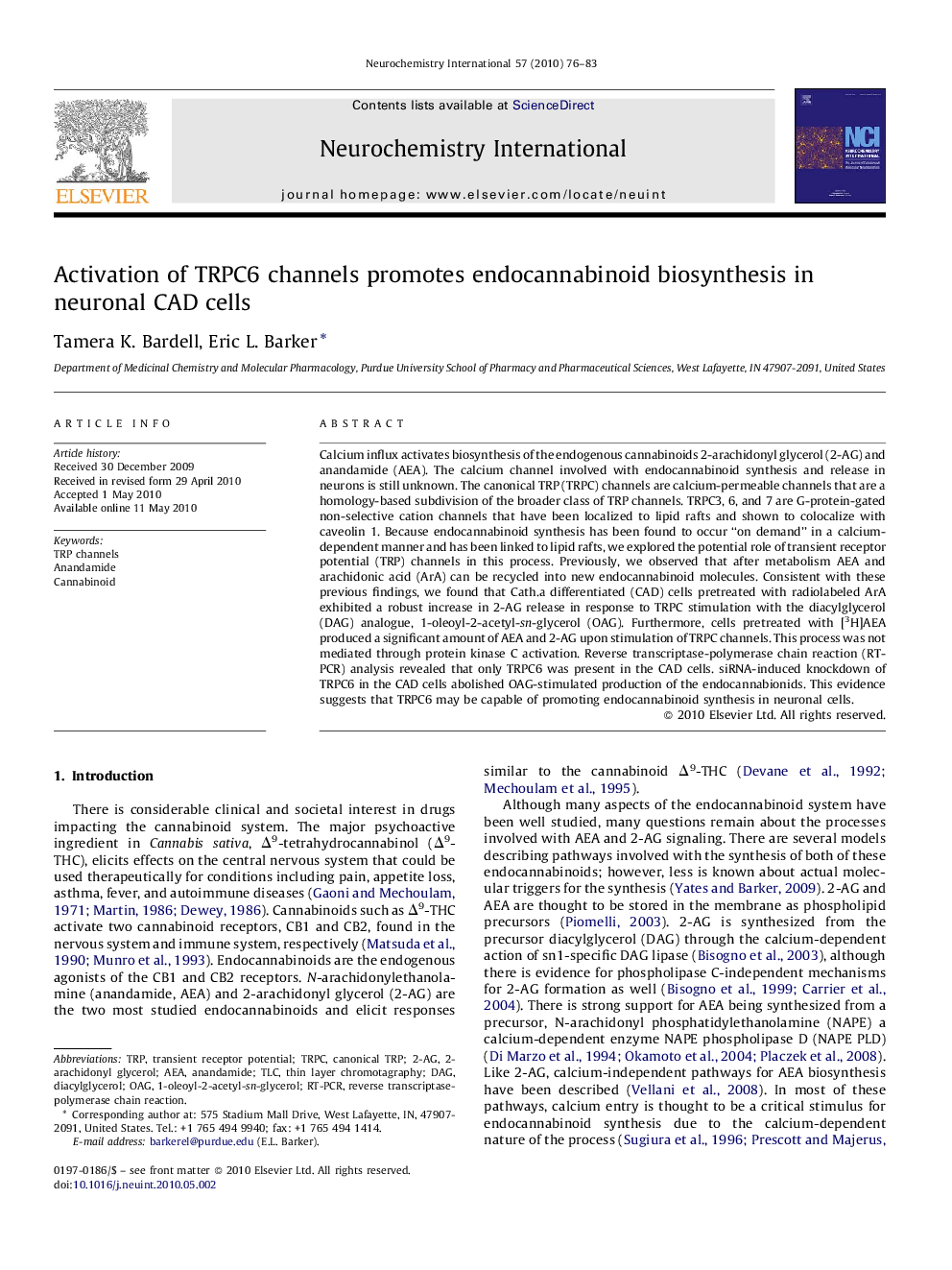| Article ID | Journal | Published Year | Pages | File Type |
|---|---|---|---|---|
| 2201377 | Neurochemistry International | 2010 | 8 Pages |
Calcium influx activates biosynthesis of the endogenous cannabinoids 2-arachidonyl glycerol (2-AG) and anandamide (AEA). The calcium channel involved with endocannabinoid synthesis and release in neurons is still unknown. The canonical TRP (TRPC) channels are calcium-permeable channels that are a homology-based subdivision of the broader class of TRP channels. TRPC3, 6, and 7 are G-protein-gated non-selective cation channels that have been localized to lipid rafts and shown to colocalize with caveolin 1. Because endocannabinoid synthesis has been found to occur “on demand” in a calcium-dependent manner and has been linked to lipid rafts, we explored the potential role of transient receptor potential (TRP) channels in this process. Previously, we observed that after metabolism AEA and arachidonic acid (ArA) can be recycled into new endocannabinoid molecules. Consistent with these previous findings, we found that Cath.a differentiated (CAD) cells pretreated with radiolabeled ArA exhibited a robust increase in 2-AG release in response to TRPC stimulation with the diacylglycerol (DAG) analogue, 1-oleoyl-2-acetyl-sn-glycerol (OAG). Furthermore, cells pretreated with [3H]AEA produced a significant amount of AEA and 2-AG upon stimulation of TRPC channels. This process was not mediated through protein kinase C activation. Reverse transcriptase-polymerase chain reaction (RT-PCR) analysis revealed that only TRPC6 was present in the CAD cells. siRNA-induced knockdown of TRPC6 in the CAD cells abolished OAG-stimulated production of the endocannabionids. This evidence suggests that TRPC6 may be capable of promoting endocannabinoid synthesis in neuronal cells.
